AUTOMOBILE TIRE FAILURE ANALYSIS,
UNDER-INFLATION
by
Charles C. Roberts, Jr.
Tire failures are a classical cause of automobile accidents and are
often investigated by claims personnel as to subrogation potential
against the tire manufacturer. However, many tire failures are a
result of improper maintenance on the part of the insured and may
have nothing to do with a manufacturing or design defect. Tire air
pressure tends to reduce over time through various forms of normal
air leakage or as a result of temperature variations. The owner of
the vehicle is expected to make sure the tire pressure is within the
range specified by the tire manufacturer for the loading required.
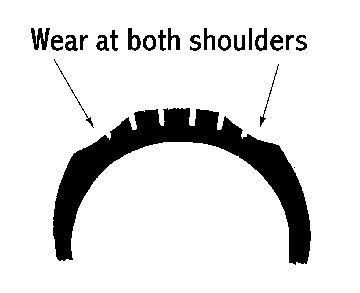
Figure 1
Figure 1 is a classic piece of evidence that the tire has been under-
inflated for a period of time. Excessive wear or much smaller tread
depth at the shoulders indicates that the outer areas of the tire were
supporting the vehicle, since there is insufficient pressure to push
out the center.
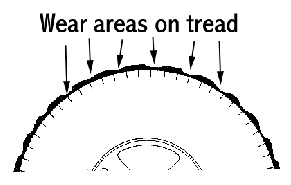
Figure 2
Wear areas on the tread (Figure 2) are also another indication of
the tire operating at lower than required air pressure. This is caused
by excessive flexure of the tire, brought on by fatigue failure of the
internal cord structure.
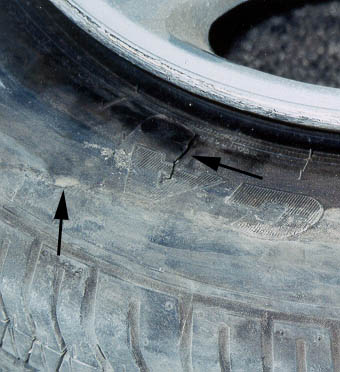
Figure 3
The tire in Figure 3 was on a vehicle whose driver indicated loss of
control when it suddenly deflated. Upon inspection of the tire, after
removal from the vehicle, the bead was found to be separated, as a
result of the accident. There were two openings in the sidewall of
the tire. The one at the center of the photo, (right arrow) was a rim
nip from the accident; the other (left arrow) was a fatigue related
failure.
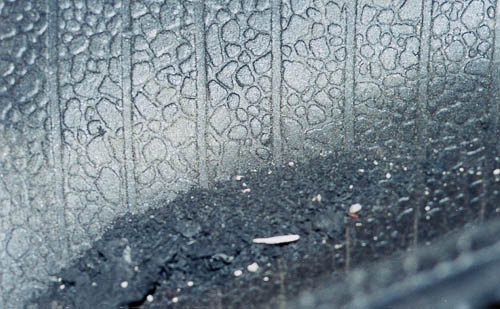
Figure 4
The tire was removed to inspect the inner casing. Figure 4 shows a
view of flexed rubber and rough, scab like patches on the inner
surface. This is a result of excessive flexure, characteristic of
operating the tire under-inflated.
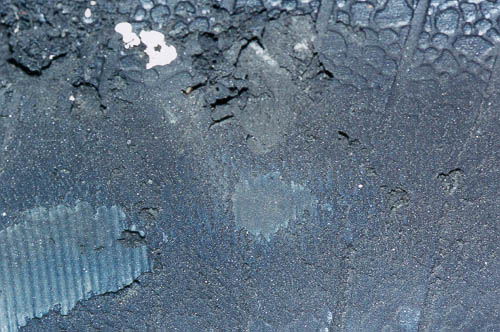
Figure 5
Figure 5 shows rubber dust and debris that came from the inner
walls as a result of excessive flexure and is characteristic of an
under-inflated tire.
Excessive outer tread wear, circumferential flat spots, rubber dust
inside the tire and scabbing of the rubber on the inside, are
indicators of operating a tire under-inflated. The failure mode is
typically a fatigue failure of the sidewall, which can cause an
accident, with culpability most likely residing with the person
responsible for maintenance of the vehicle.
FOR TECHNICAL ARTICLES CONTACT CLAIMS MAGAZINE AND ASK
FOR A REPRINT OF A PAST TECHNICAL NOTEBOOK ARTICLE
CLAIMS MAGAZINE





